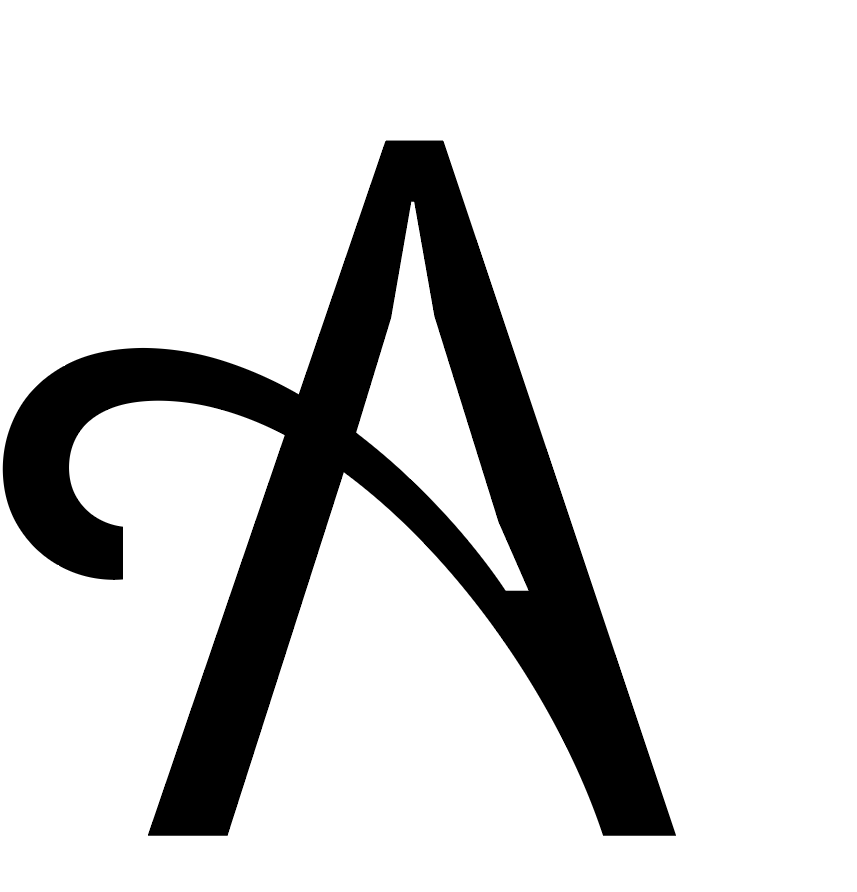

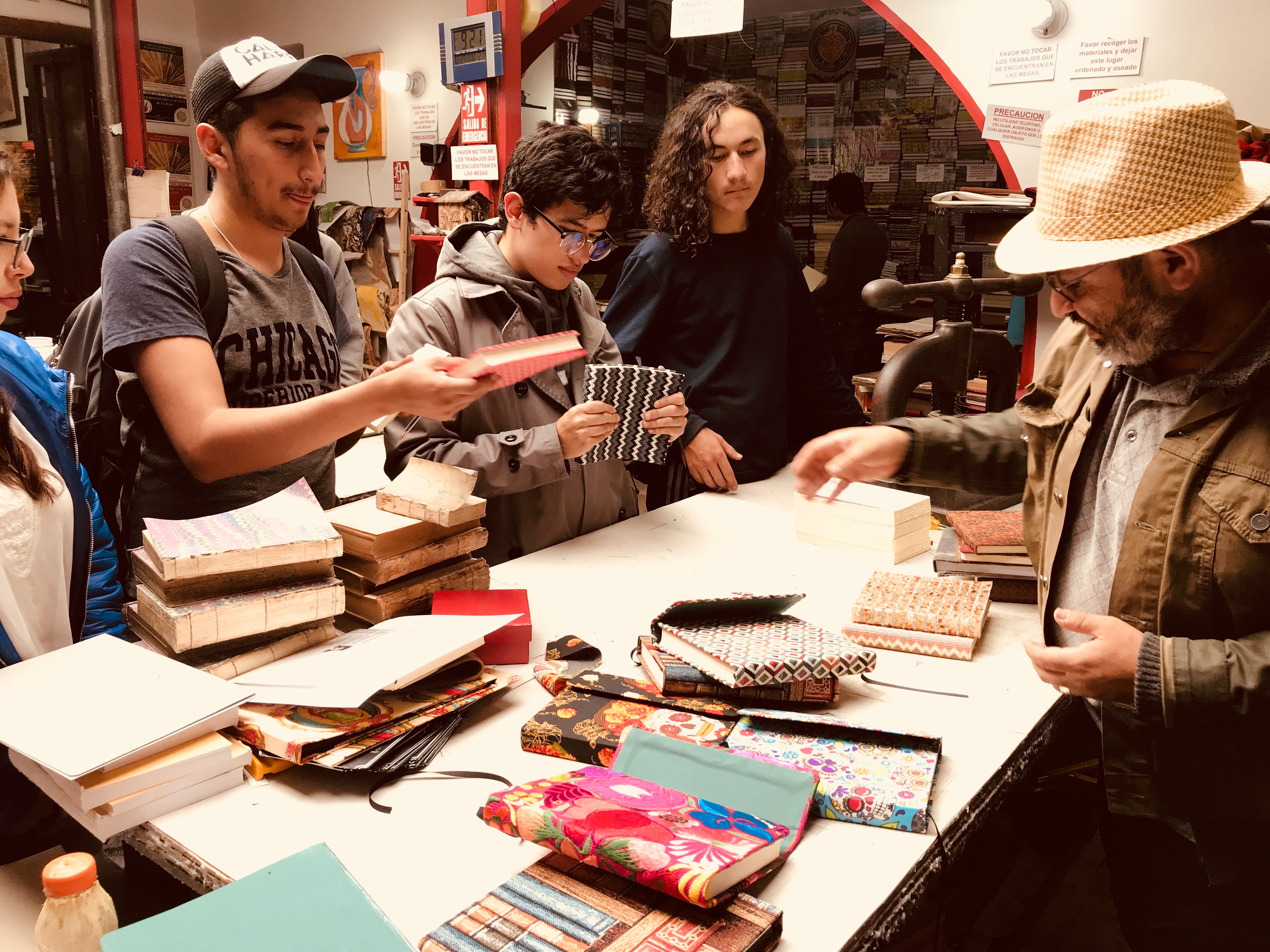
The book has a tradition of more than 500 years of existence and it could be said that it is one of the most valuable inventions of humanity to this day. Its ethical and material value has changed dramatically in recent years, as have its distribution channels, printing technologies, reproduction media, formats and, in general, the publishing industry in its task and function. In the era of Snapchat, Facebook, and Instagram, the landscape of the publishing field has expanded in unpredictable directions. In this way it is important to discuss and analyze its current state, its near future and possible visionary directions.
What are the tasks and functions of the books of the future in a multimedia and utopian context taking into account social, political and economic factors? What are possible hybrid, interactive, and digital forms of the book? What are new custom formats for "Selfpublishing", "Books on Demand" and Distribution? Finally, what are the future tasks of publishing houses in a world in which the media are rapidly transforming?






The main objective of this course was to create a publication with real content. The content, as well as the form, the structure and the appropriate editorial medium had to be developed together in a conceptual way throughout the semester. In this way, the students went through the complete process of realization, starting with the idea, the sketch, the design until, finally, reaching the phase of production, distribution and financing.
Different exercises and briefs accompanied the editorial process throughout the semester, which helped to expand knowledge and personal perspective. The analysis of the facilitation, duplication and diffusion of editions, of the different channels and advertising media, of the elaboration techniques and of the design factors were part of this program. Through discussions with guests, the students got a complete idea about future visions in this field and receive important impulses in the development of their projects.
Conversatorio Publishing in the age of "multi-connectivity"
Guests: Julio Paredes (Director Ediciones Uniandes), Catalina Holguín (Editorial Director of Manuvo), Jairo Dueñas (Former Director of Cromos magazine) and Silhouetta Editions
Guests: Julio Paredes (Director Ediciones Uniandes), Catalina Holguín (Editorial Director of Manuvo), Jairo Dueñas (Former Director of Cromos magazine) and Silhouetta Editions


The outcome of the conversation was a rapid RISO publication made by all classmembers.

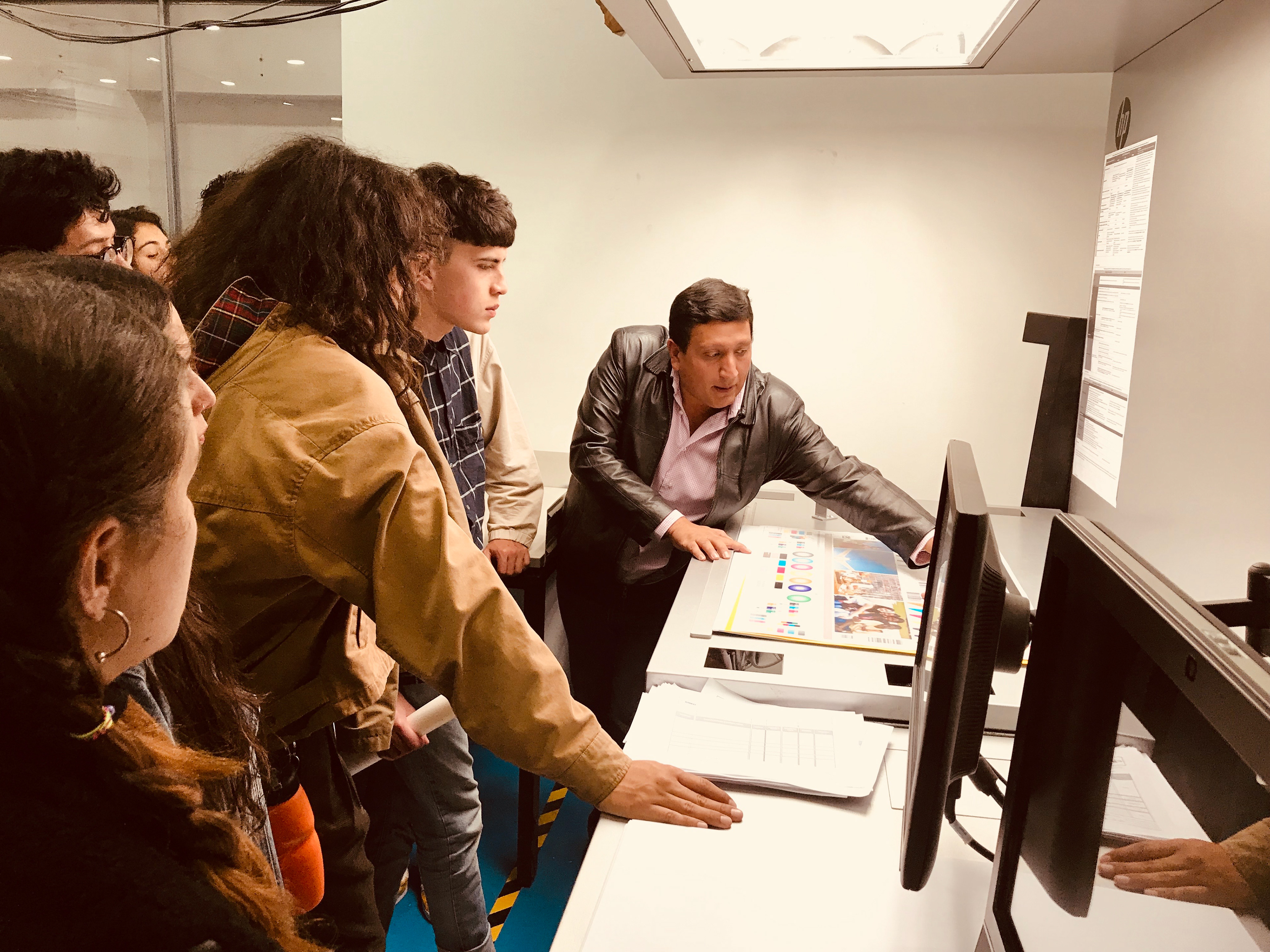
Digital versus offset printing. Visit to Editorial Kimpres SAS, Bogotá.
Outcomes





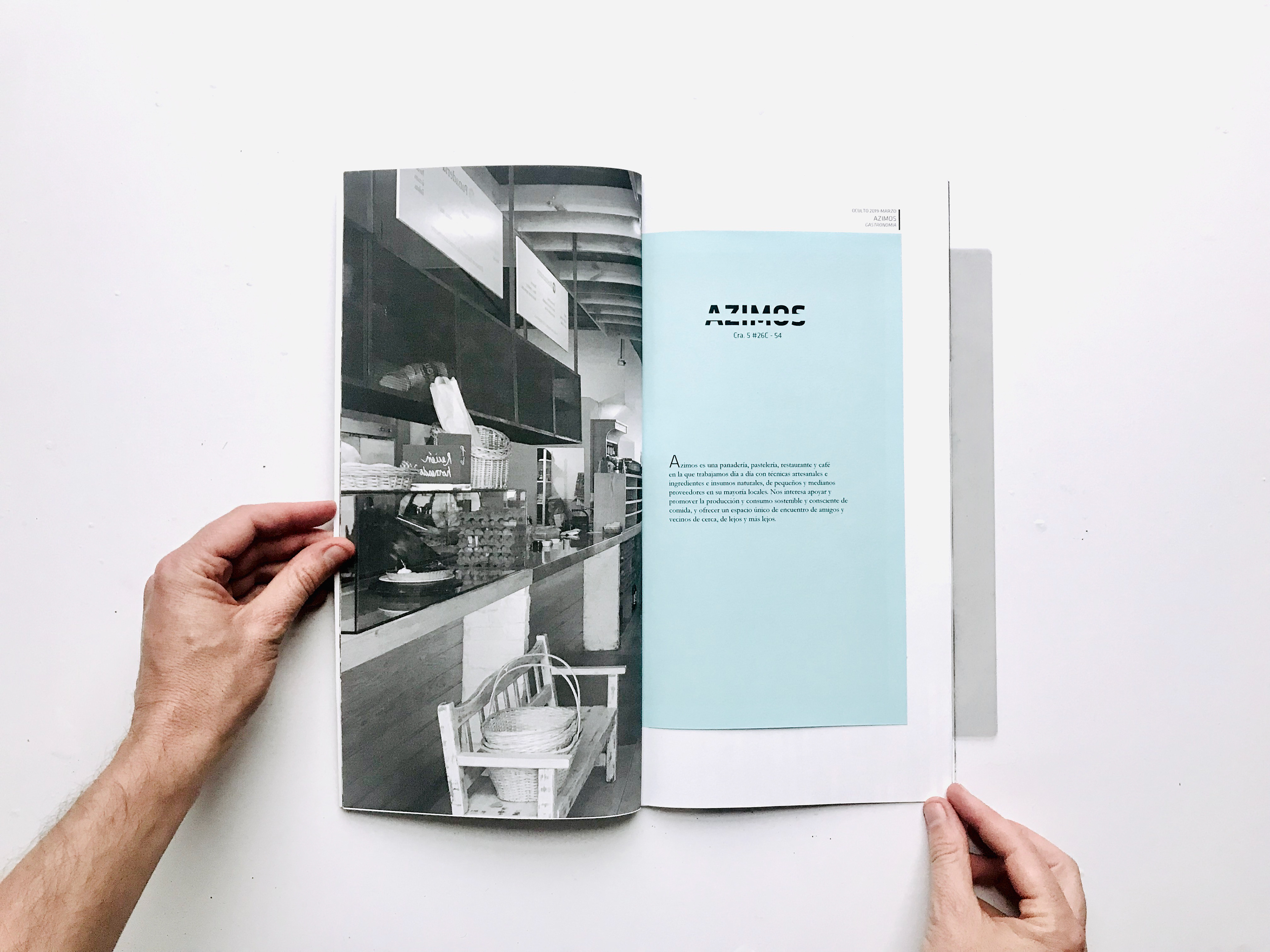

Hidden is a publication made by Jean Paul Sandoval Basto that compiles the hidden spaces of Bogotá, groups them into three categories (Culture, Gastronomy and Entertainment) in order to make them known.
The city is not a homogeneous construction, it is full of contrasts and especially the particular way in which each person lives and sees it. Bogotá is a city of contrasts, between inside and outside, what is seen and what is not, what is perceived and what is unknown. A city that lives from inside doors, which leads to hidden spaces in the midst of the daily chaos of the city, with distant and isolated facades that seem to show the coldest face of Bogotá. However, inside there are magical, unexpected spaces, which are isolated from the outside in order to transform the disorganized atmosphere of Bogotá.







nonorma are four abnormal notebooks designed by Daniel Vallejo that incite to break rules and write by hand. nonorma enhances the error when writing by hand, the manual trick. It moves away from all computer imposition that seeks to abolish manual technologies. Reject normal ways of tracing signs that represent ideas and words. Celebrate the human-animal instinct of breaking margins, not using a ruler and slashing the pencil with whatever you can.
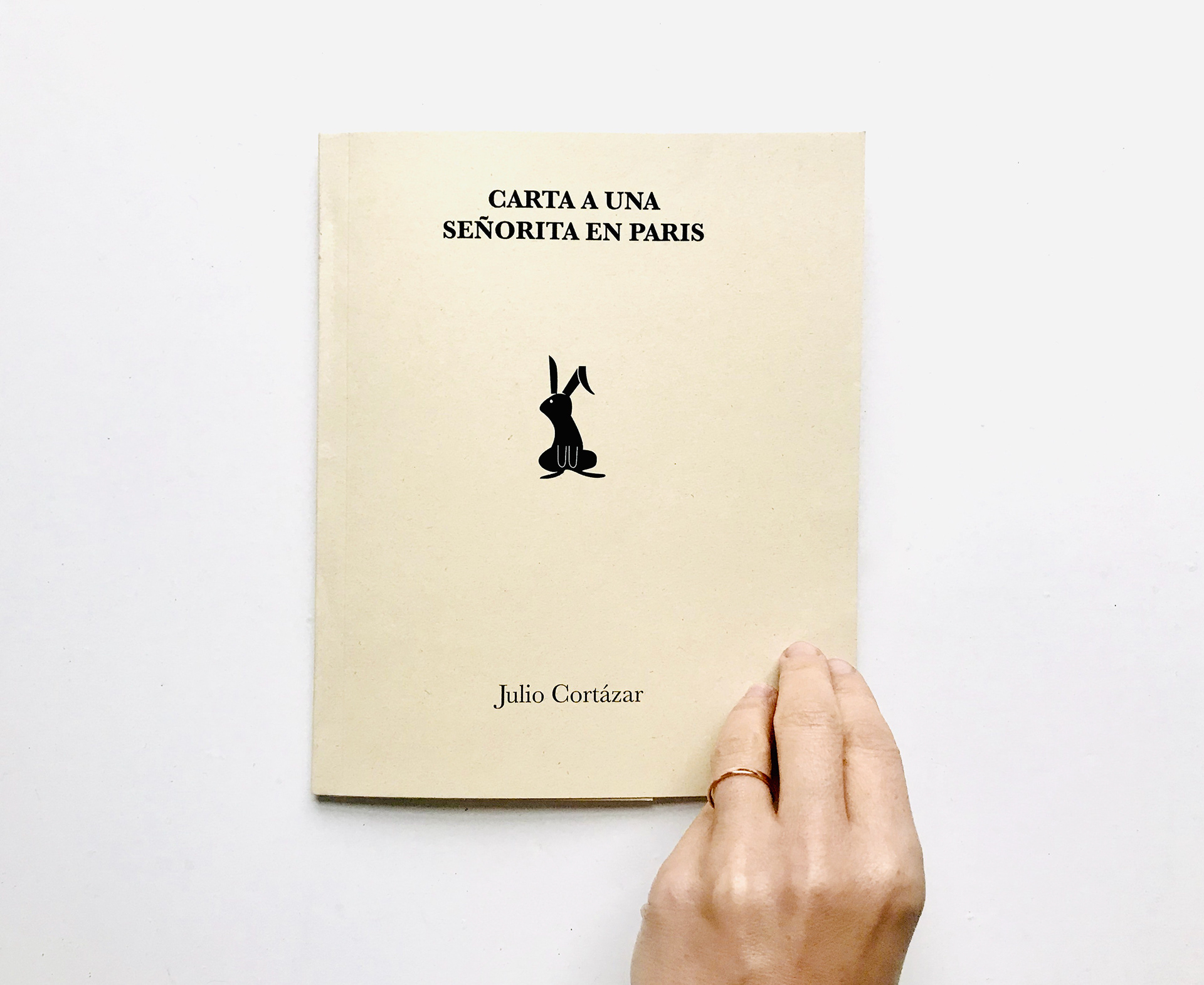


Letter to young lady in Paris by Julio Cortázar is a story that was graphically intervened by Mónica Morales in order for children between 9 and 11 years old to understand the content that this offers. Nowadays the content in the publications is the most important, therefore this project seeks to adapt the content of a fantastic story to what is its target audience. In order that through simple and short explanations children can have a first understanding of what the story wants to tell.


The glass manifesto is a reflection by Santiago Gómez about the constant state in which things are, but which we decided to ignore. It is a call to notice the fragility of what surrounds us and at the same time it is an invitation to break everything that is within our reach. The project features an explosion of 4 broken glass plates and some poems that serve as a reflection to break what bothers us.
.........
Professors
Olivier Arcioli & Annelie Franke
Students
Monica Montes, Natalia Martínez, Maria Alejandra Diaz, Santiago Gómez, Daniel Vallejo, Maria Teresa Franco, Jean Paul Sandoval, Juan Pablo Jimenez, Andres Fresneda, Carlos Buenaventura, Luis Lemus, Debora Falleiros
